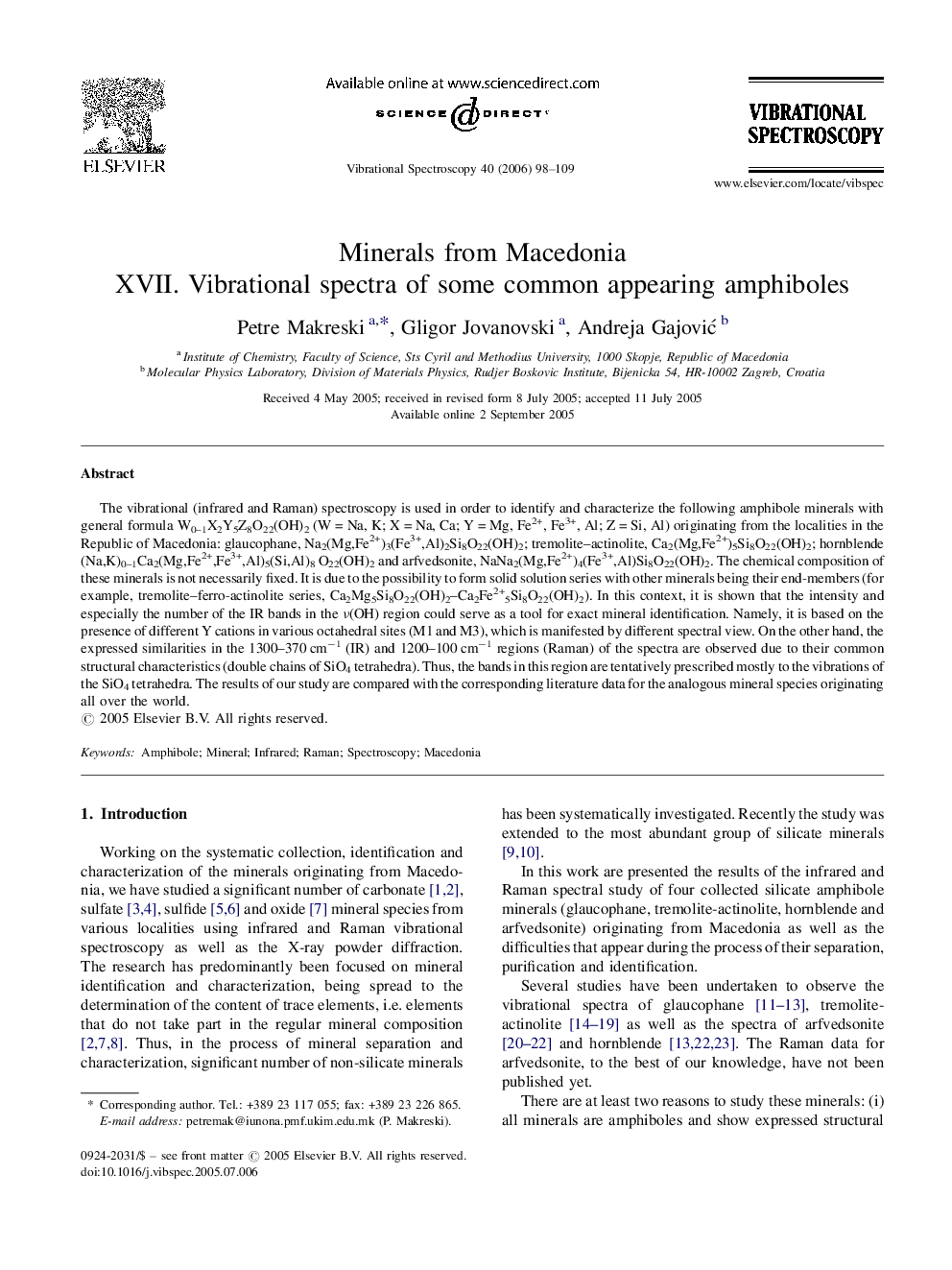| Article ID | Journal | Published Year | Pages | File Type |
|---|---|---|---|---|
| 1251210 | Vibrational Spectroscopy | 2006 | 12 Pages |
The vibrational (infrared and Raman) spectroscopy is used in order to identify and characterize the following amphibole minerals with general formula W0–1X2Y5Z8O22(OH)2 (W = Na, K; X = Na, Ca; Y = Mg, Fe2+, Fe3+, Al; Z = Si, Al) originating from the localities in the Republic of Macedonia: glaucophane, Na2(Mg,Fe2+)3(Fe3+,Al)2Si8O22(OH)2; tremolite–actinolite, Ca2(Mg,Fe2+)5Si8O22(OH)2; hornblende (Na,K)0–1Ca2(Mg,Fe2+,Fe3+,Al)5(Si,Al)8 O22(OH)2 and arfvedsonite, NaNa2(Mg,Fe2+)4(Fe3+,Al)Si8O22(OH)2. The chemical composition of these minerals is not necessarily fixed. It is due to the possibility to form solid solution series with other minerals being their end-members (for example, tremolite–ferro-actinolite series, Ca2Mg5Si8O22(OH)2–Ca2Fe2+5Si8O22(OH)2). In this context, it is shown that the intensity and especially the number of the IR bands in the ν(OH) region could serve as a tool for exact mineral identification. Namely, it is based on the presence of different Y cations in various octahedral sites (M1 and M3), which is manifested by different spectral view. On the other hand, the expressed similarities in the 1300–370 cm−1 (IR) and 1200–100 cm−1 regions (Raman) of the spectra are observed due to their common structural characteristics (double chains of SiO4 tetrahedra). Thus, the bands in this region are tentatively prescribed mostly to the vibrations of the SiO4 tetrahedra. The results of our study are compared with the corresponding literature data for the analogous mineral species originating all over the world.
